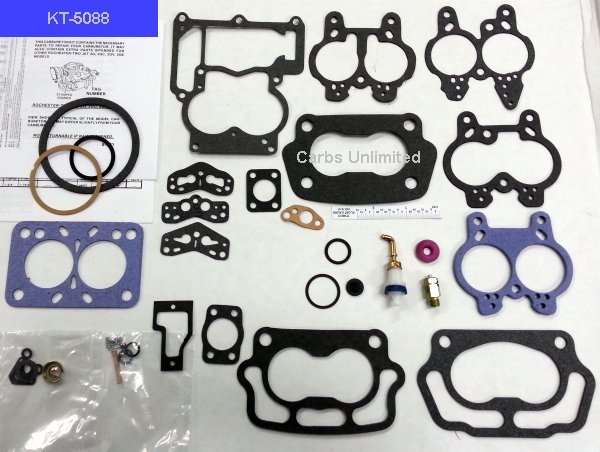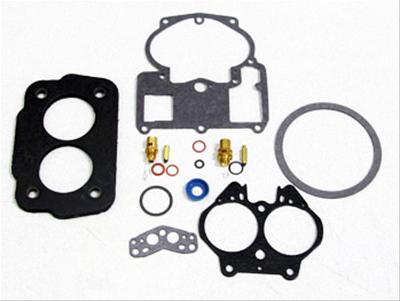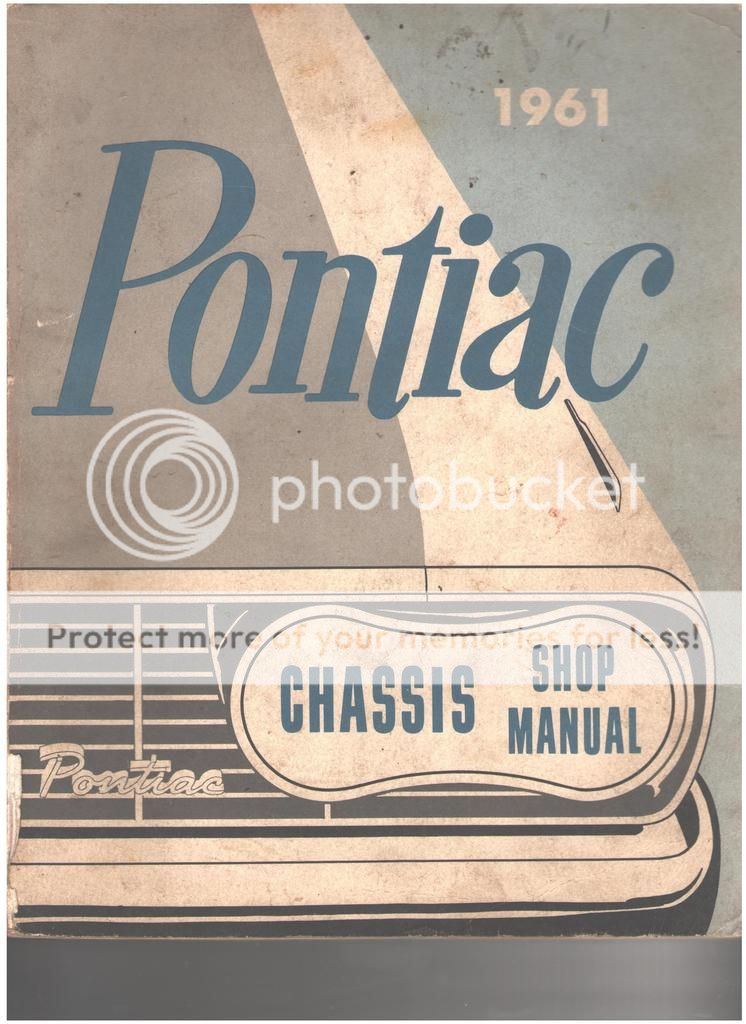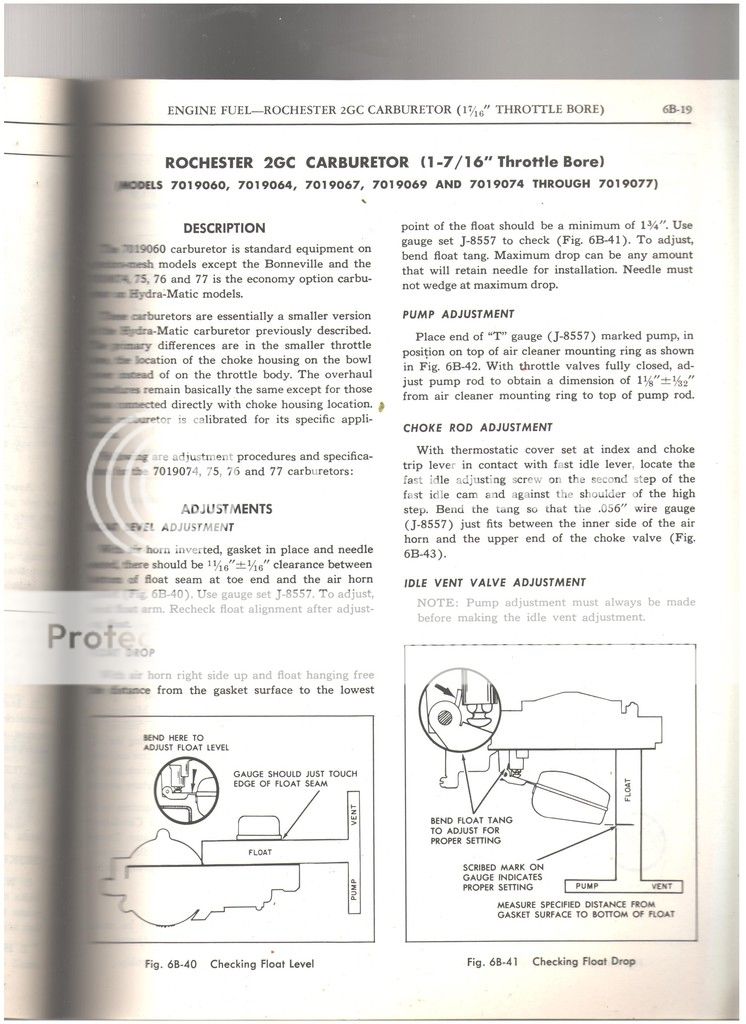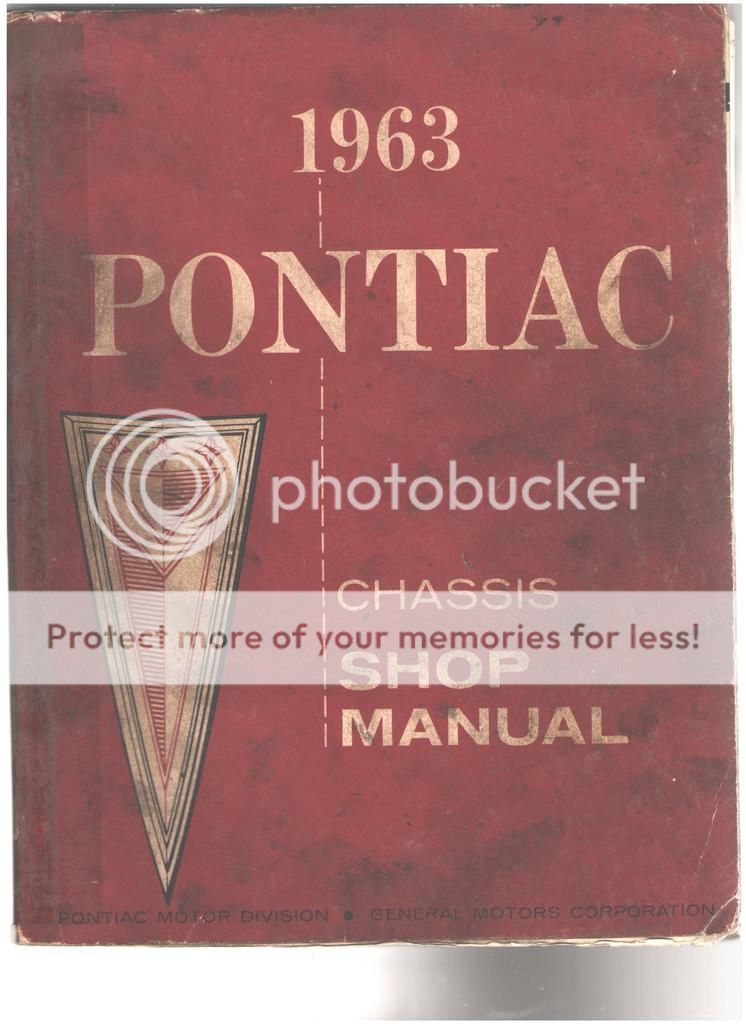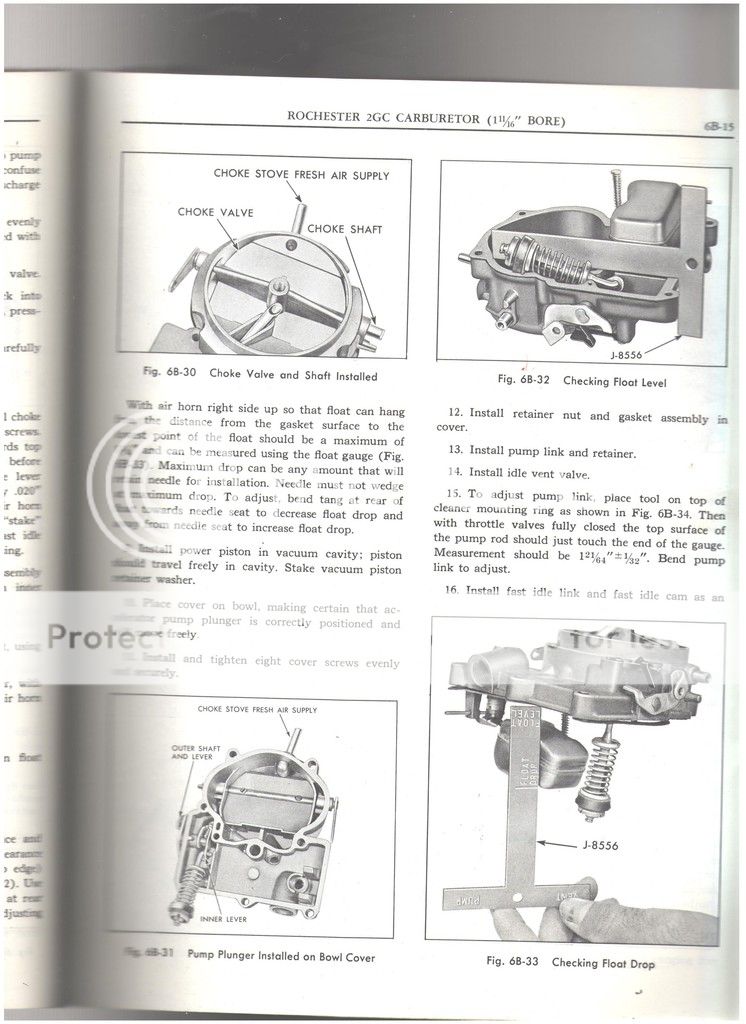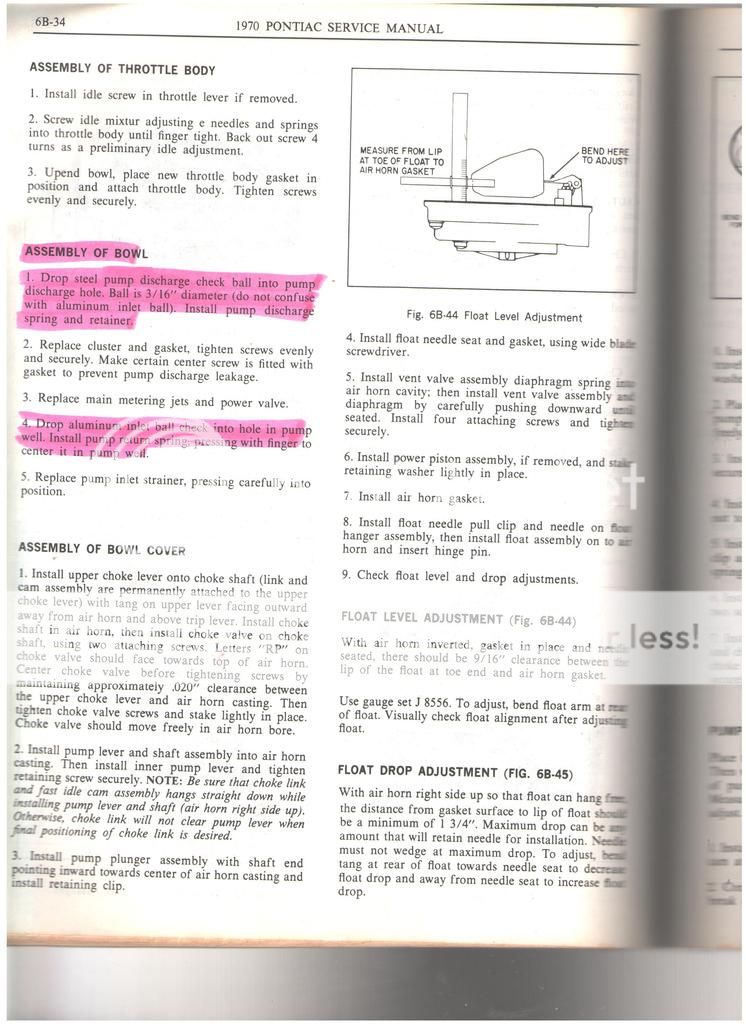Rochester Identification
You can usually find the carbs casting number and date code on the driverside of the carb stamped vertically.
A typical stamping;
7045213 YA
101 5
70 = Rochester products division#
45 = Production year, 4=1970's, 5=specific year, 1975
2 = Carb ID, 2=49 state Q-jet
1 = Division, 1=Chevrolet products
3 = Tranny ID*, Even number=Automatic, Odd number=manual
101 5 = Julian Date Code, Friday April 11 1975
YA = Engine assembly plant
# Carbs starting with 70xxxxx are pre-1976. Carbs starting with 170xxxxx are 1976 onwards.
An important note: Primary metering rods are different lengths for the two units, both rods are available from GM, and the new-part part numbers correspond with the carb. Rods whose p/n starts with a 7xyz are for the 70xxxxx carbs, and p/n 17xyz are for the 170xxxxx carbs.
* tranny ID is not cast in stone. This particular example was original equipment on an automatic equipped pickup truck.
Production Year
15 = 1960
19 = 1961
20 = 1962
2x = 1963-1969
3x = 1966-1967 A.I.R. equipped vehicles
4x = 1970-1975
5x = 1976-1979
8x = 1980-?
x=last digit of model year
Carb ID
0 = 49 state mono-jet
1 = 49 state 2bbl
2 = 49 state Q-jet
3 = California mono-jet
4 = California 2bbl
5 = California and high altitude Q-jet
Product Division
0,1,2 = Chevrolet
3 = Cadilllac
4 = Buick
5 = Oldsmobile
6,7 = Pontiac
8 = Non-GM, possibly Mercruiser Marine
9 = Special
Julian Date Code
From our above example code;
101 = Day of the year (1 thru 364/5)
5 = Last digit of manufacturing year. (0 thru 9). Utilize carb id for 60's, 70's, or 80's.
Some of those multiyear calanders with a look-up table have the Julian day of the year on them. If not, you'll just need to count out the days.
Engine Assembly Plant
YA = ?
FJY =?
Examples
Our example carb, 7045213
Is a Rochester carb, for the 1975 model year, 49 state (federal) Q-jet, Chevrolet Division with supposedly a manual transmission.
What it was originally installed on was a non-emmisions controlled 1975 3/4 ton Chevrolet Pickup truck with a 350 cubic inch engine and an AUTOMATIC transmission.
How about another? 17083222
Date Code 0183
Is a 1983 model year, 49 state Q-jet, Chevrolet division with an automatic tranny.
Manufactured on the 18th day of the year, in a year ending in 3. For, January 18 1983
Originally installed on a 1983 1/2 ton Chevy Pickup with a 305 and automatic tranny.
And one more for fun, 7043114
A 1973, 49 state 2bbl , Chevrolet division, with an automatic tranny.
Originally installed on a 1973 Nova w/350 and automatic tranny.
You can usually find the carbs casting number and date code on the driverside of the carb stamped vertically.
A typical stamping;
7045213 YA
101 5
70 = Rochester products division#
45 = Production year, 4=1970's, 5=specific year, 1975
2 = Carb ID, 2=49 state Q-jet
1 = Division, 1=Chevrolet products
3 = Tranny ID*, Even number=Automatic, Odd number=manual
101 5 = Julian Date Code, Friday April 11 1975
YA = Engine assembly plant
# Carbs starting with 70xxxxx are pre-1976. Carbs starting with 170xxxxx are 1976 onwards.
An important note: Primary metering rods are different lengths for the two units, both rods are available from GM, and the new-part part numbers correspond with the carb. Rods whose p/n starts with a 7xyz are for the 70xxxxx carbs, and p/n 17xyz are for the 170xxxxx carbs.
* tranny ID is not cast in stone. This particular example was original equipment on an automatic equipped pickup truck.
Production Year
15 = 1960
19 = 1961
20 = 1962
2x = 1963-1969
3x = 1966-1967 A.I.R. equipped vehicles
4x = 1970-1975
5x = 1976-1979
8x = 1980-?
x=last digit of model year
Carb ID
0 = 49 state mono-jet
1 = 49 state 2bbl
2 = 49 state Q-jet
3 = California mono-jet
4 = California 2bbl
5 = California and high altitude Q-jet
Product Division
0,1,2 = Chevrolet
3 = Cadilllac
4 = Buick
5 = Oldsmobile
6,7 = Pontiac
8 = Non-GM, possibly Mercruiser Marine
9 = Special
Julian Date Code
From our above example code;
101 = Day of the year (1 thru 364/5)
5 = Last digit of manufacturing year. (0 thru 9). Utilize carb id for 60's, 70's, or 80's.
Some of those multiyear calanders with a look-up table have the Julian day of the year on them. If not, you'll just need to count out the days.
Engine Assembly Plant
YA = ?
FJY =?
Examples
Our example carb, 7045213
Is a Rochester carb, for the 1975 model year, 49 state (federal) Q-jet, Chevrolet Division with supposedly a manual transmission.
What it was originally installed on was a non-emmisions controlled 1975 3/4 ton Chevrolet Pickup truck with a 350 cubic inch engine and an AUTOMATIC transmission.
How about another? 17083222
Date Code 0183
Is a 1983 model year, 49 state Q-jet, Chevrolet division with an automatic tranny.
Manufactured on the 18th day of the year, in a year ending in 3. For, January 18 1983
Originally installed on a 1983 1/2 ton Chevy Pickup with a 305 and automatic tranny.
And one more for fun, 7043114
A 1973, 49 state 2bbl , Chevrolet division, with an automatic tranny.
Originally installed on a 1973 Nova w/350 and automatic tranny.

